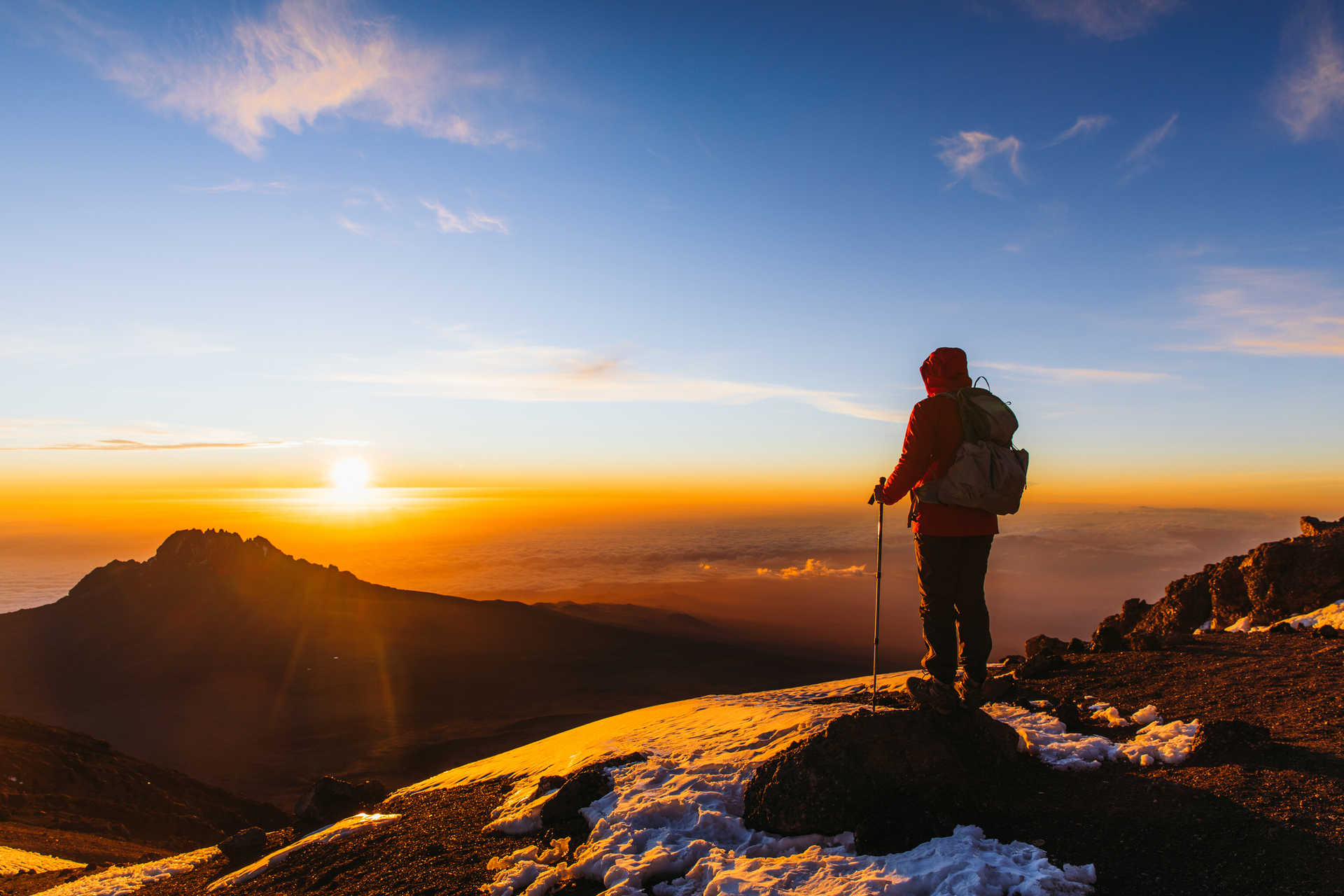What to Expect on Kilimanjaro Summit Night
We at Kandoo Adventures are adventure travel experts,
operating small group trips to some of the most iconic natural landscapes
around the world. In fact, Kilimanjaro, Tanzania, was one of the very first
adventure travel experiences we offered back in 2009 when Kandoo Adventures was
created. Since then, we have helped over 12,000 people climb Kilimanjaro and it
remains one of our most popular trekking destinations. With top quality
equipment, the best guides on the mountain and a 98% success rate, we offer trekkers
the best chance of successfully reaching the top of Kilimanjaro.
In this guide, we’ll talk you through what to expect during
Kilimanjaro summit night, from the essential gear you’ll need to tips for
summit success.
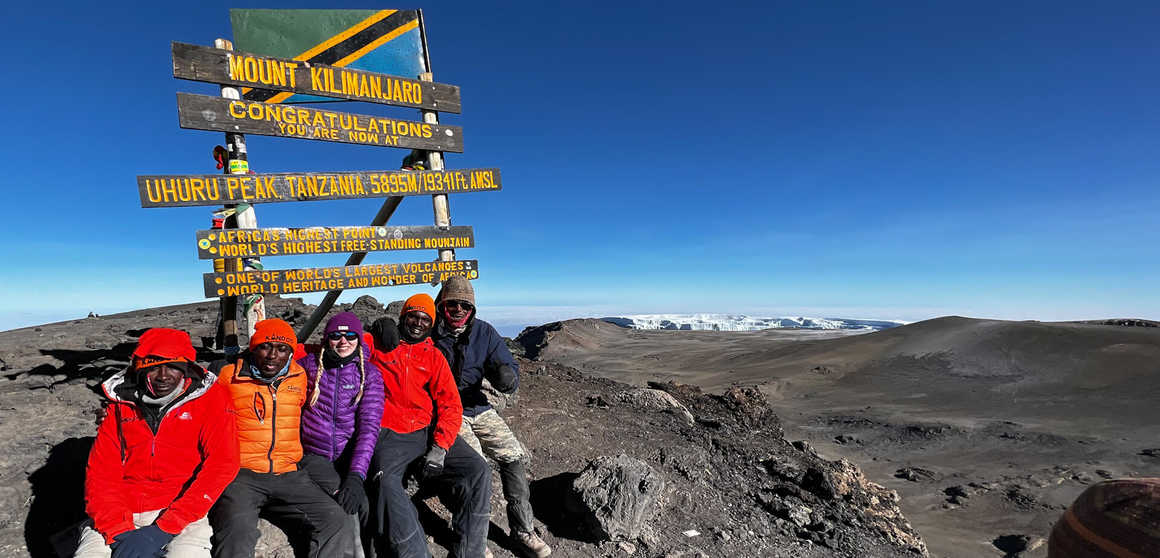
How high is Kilimanjaro summit?
The highest point of Kilimanjaro is called Uhuru Peak,
located on the volcanic cone of Kibo. It is the final destination for tens of
thousands of trekkers each year who attempt the Kilimanjaro trek and where
elated conquerors pose for photos with the iconic Kilimanjaro summit sign.
How long does it take to summit Kilimanjaro?
Our blog post ‘How Long Does It Take to Climb Kilimanjaro’ provides a detailed breakdown of the time it takes to climb Kilimanjaro on each
of the seven routes up the mountain.
What is the best route to climb Kilimanjaro?
When choosing the best route to climb Kilimanjaro, you need
to take a number of factors into account including acclimatisation, how busy
the route is, what the accommodation options are and the success rate of the
route. The trails are not overly technical and so long as you train and are
physically fit, then you should be fine. Each route offers its own advantages
and disadvantages, so the best route is totally dependent on your preferences
and priorities.
The most popular Kilimanjaro route is undoubtedly the Machame
Route, due to its accessibility, spectacular panoramic views and high
success rate. The Machame Route’s popularity means that you’re likely to be
trekking in the company of many like-minded souls. However, we think this is a
minor downside that is balanced out by a route that is budget friendly, easier
to get to than others and offers unrivalled scenery and a better than average
chance of success.
Our blog post ‘Our Top 5 Routes to Climb Kilimanjaro’
provides a detailed breakdown of each of the routes to Kilimanjaro summit as
well as our recommendation of the best route to climb Kilimanjaro.
What is the best time of year to climb Kilimanjaro?
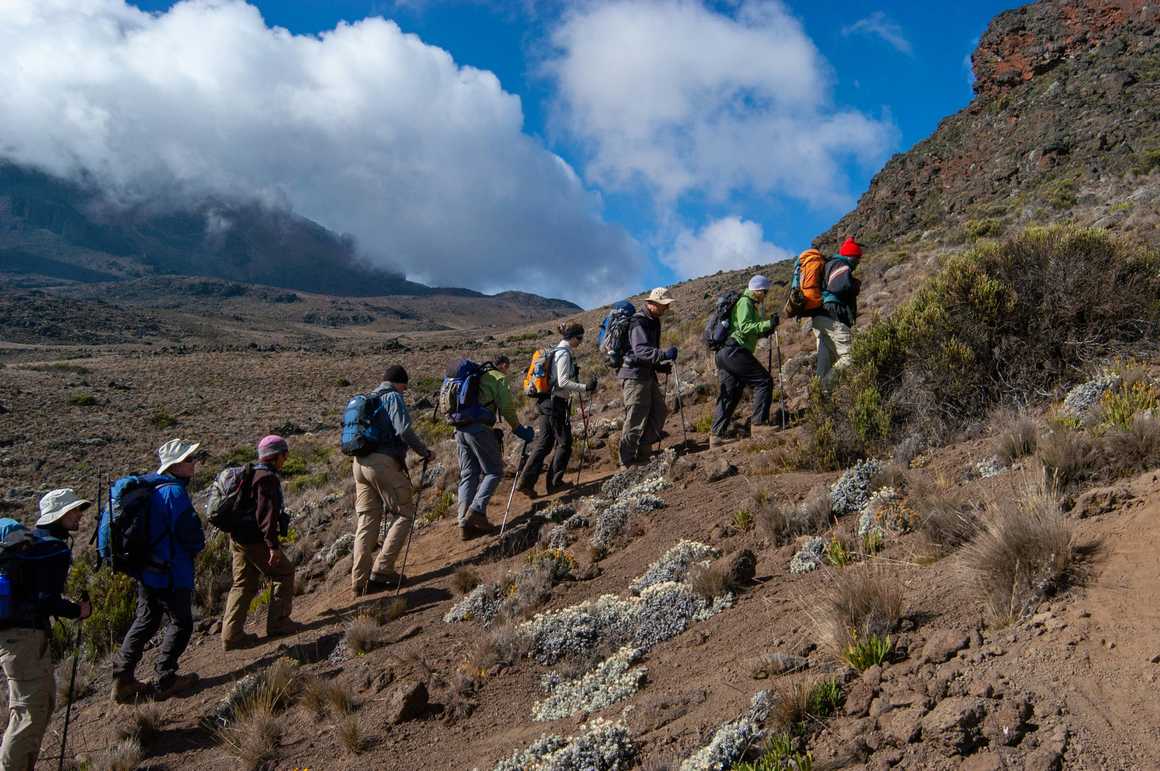
What is summit night on Kilimanjaro?
Summit night is the part of the trek where you set out for
the highest point of the mountain. It’s called summit night by some and summit
day by others, and both are valid as the climb starts during the night and ends
in the daytime. During this time, you trek up to Kilimanjaro summit for sunrise
and then hike about halfway back down the mountain. It’s one mammoth day of
trekking!
The Kilimanjaro summit climb begins around 11:30pm, and the
first stretch is a steep rocky trail that leads to the crater rim. As trekkers
make their way up the mountain, the temperature drops significantly, and the
wind starts to pick up, making it essential to have warm clothing. The only
source of light at this hour is the moon and the headlamps of the trekkers.
As the trekkers move closer to the summit, the anticipation
of witnessing the sunrise from the top builds up excitement and determination.
Then, after relishing your achievement of reaching the summit, trekkers descend
to their camp for the night where they will enjoy their last dinner on the
mountain as well as a well-earned sleep.
Why summit Kilimanjaro at night?
Firstly, the higher the altitude,
the harder it is to sleep at night. This is because the reduced oxygen makes
breathing more difficult. Instead of everyone lying awake in bed fretting over
the major trek ahead of them, most tour operators bite the bullet and set out
early for the summit.
Another of the main reasons for summiting Kilimanjaro at
night is there is a lot of ground to cover. Regardless of the Kilimanjaro route
you have taken and the base camp from which you start your ascent, you have to
trek for hours to reach the summit of Kilimanjaro. Then, you must trek for
hours more down the mountain to reach that night’s overnight camp.
On top of that, all the water used for drinking, cooking and
cleaning during your trek is obtained from streams found lower down on the
mountain. The summit’s base camps are in the alpine desert zone, where there
usually isn’t flowing water. The longer trekkers stay at very high altitude on
Kilimanjaro, the more water porters must carry up to camp, and they can only
carry so much until more porters are required.
Lastly, at Kandoo, our guides try to time their ascent so
that the trekking party reaches the summit just after sunrise. Among the
different experiences that the mountain offers, summit at sunrise is undoubtedly
the most beautiful and cherished one. The breathtaking view of the sunrise from
‘the roof of Africa’ is a once-in-a-lifetime experience that should not be
missed.
How hard is summit night on Kilimanjaro?
Arriving at Barafu camp the day before, you will have the
afternoon to relax, rest up and east before going to bed early, ready for your
midnight wake up call. You will be woken with tea and biscuits before starting
the push to the summit at around 11:30pm. With the light of your head torch to
guide you, you’ll be climbing a steep path for between 6 and 8 hours to reach
Stella Point on the crater rim if you are taking the Machame Route or Lemosho
Route or Gilman’s point on the Marangu Route, Rongai Route and the Northern Circuit.
It’s not over yet though! From this point, it is another 45
to 60 minutes to Kilimanjaro summit.
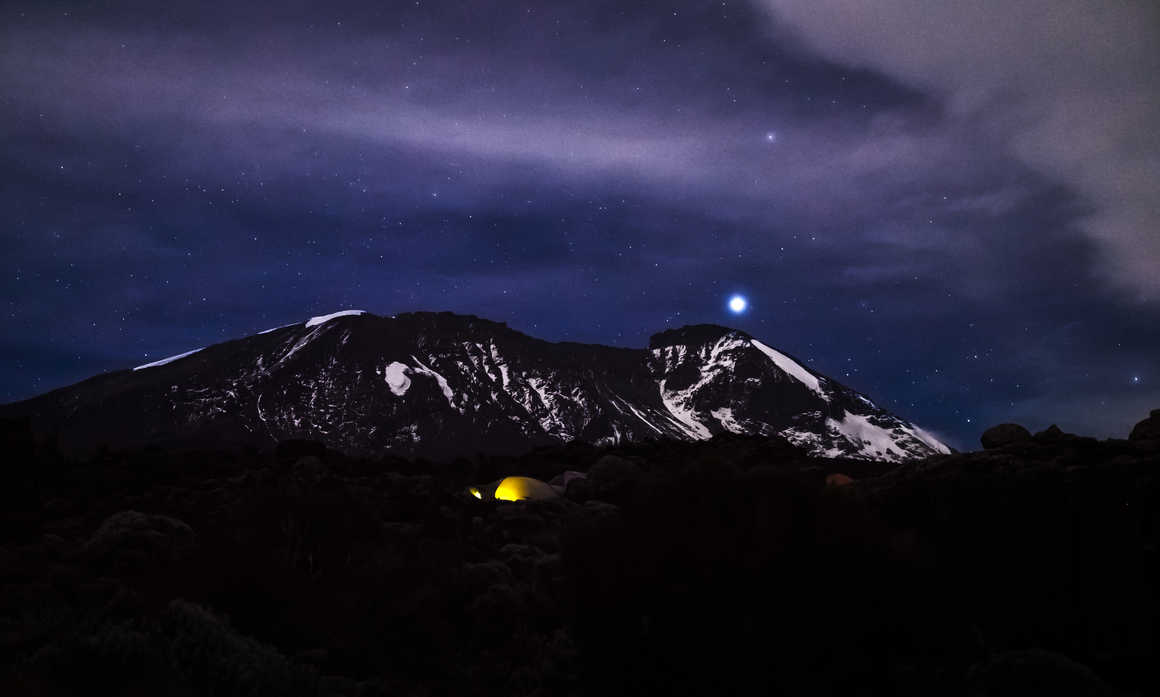
How cold is the summit of Kilimanjaro?
There are five different climate zones on Kilimanjaro that
change drastically as you ascend the mountain, each with unique weather as well
as flora and fauna. The first and lowest is the cultivated zone with
plantations and farms scattered over lush, fertile volcanic foothills. The
second zone is the rainforest zone which extends from 800m up to 3,000m. The third
zone is known as the Low Alpine Area and extends from 3,000m to 4,200m. The fourth
zone is known as the High Alpine zone which extends from 4,200m to 5,000m. The
highest area is known as the Glacial zone. This area is often covered in snow
and the high winds at this altitude make the temperature feel far colder than
it is.
What’s more, the higher up the mountain you get, the more
unpredictable the Kilimanjaro weather is. One moment you can be trekking
in baking sunshine, the next you’ll be layering up against bitter wind. As you
set off for your summit attempt, it will be bitterly cold and there may be ice
and snow under foot. Trekkers need to be prepared for warm, sunny conditions,
and rain, win, cold and even snow.
What should I wear for summit night on Kilimanjaro?
- Neck gaiter – protects your neck from the
freezing wind and blistering sun. Make sure it is lightweight, quick-drying,
breathable and absorbent.
- Warm hat – a lined and fleeced beanie style hat
will keep your head and ears warm on summit night.
- Headlamp – the lighter the headlamp the better.
Make sure it has a long battery life with a max beam length greater than 70
metres and a light output greater than 100 lumens.
- Sunglasses – at just under 6,000m, the UV
intensity on Kilimanjaro is very high and without the right protection your
eyes can be seriously damaged!
- Lip balm – it’s important to protect your lips
against the sub-zero temperatures and intense winds of summit night. Be sure to
choose one with a high SPF factor.
- Suncream – get the best sunscreen you can (high
SPF factor and sweat resistant). Small bottles are fine as you only need it for
your face and they’re lighter to carry.
- Long sleeve thermal top – ideally merino wool,
not cotton, as merino base layers help to regulate your core temperature and
are highly moisture wicking fabrics.
- Moisture wicking long sleeve shirt – should be
breathable light weight, fast drying and comfortable. Can be layered over the
top of thermals and base layers.
- Fleece or softshell jacket – Polartec is the
best material and comes in 100, 200 and 300 weight fabrics. We would recommend
the middle weight (200) as it is neither too light nor too heavy.
- Insulated jacket – a down jacket is a jacket
which has been insulated with a synthetic material or the soft and warm under
feathers from duck or geese. Down is a fantastic insulator as the loft (or
fluffiness) of down creates thousands of tiny air pockets which trap warm air
and retain heat, thus helping to keep the wearer very warm in cold winter
weather.
- Hardshell jacket – should have a hood, as you
will be able to pull this over your hat for extra head and neck warmth.
- Thermal leggings – we suggest you wear a pair of
thermal leggings for insultation on summit night.
- Walking trousers – look for a sun-protective and
water-resistant material, inner fleece material and a quick drying polyester
outer layer for warmth.
- Lightweight gloves – ideally with great wicking
properties (avoid cotton).
- Heavyweight gloves – should be waterproof and
provide shell protection in the coldest part of the climb.
- Trekking boots – be sure your boots are
comfortable, water resistant and broken in well.
- Breathable, high-wicking liner socks – avoid
cotton or cotton blended socks as they hold moisture which will encourage
rubbing.
- Thermal socks – we recommend high wicking
thermal socks for summit night.
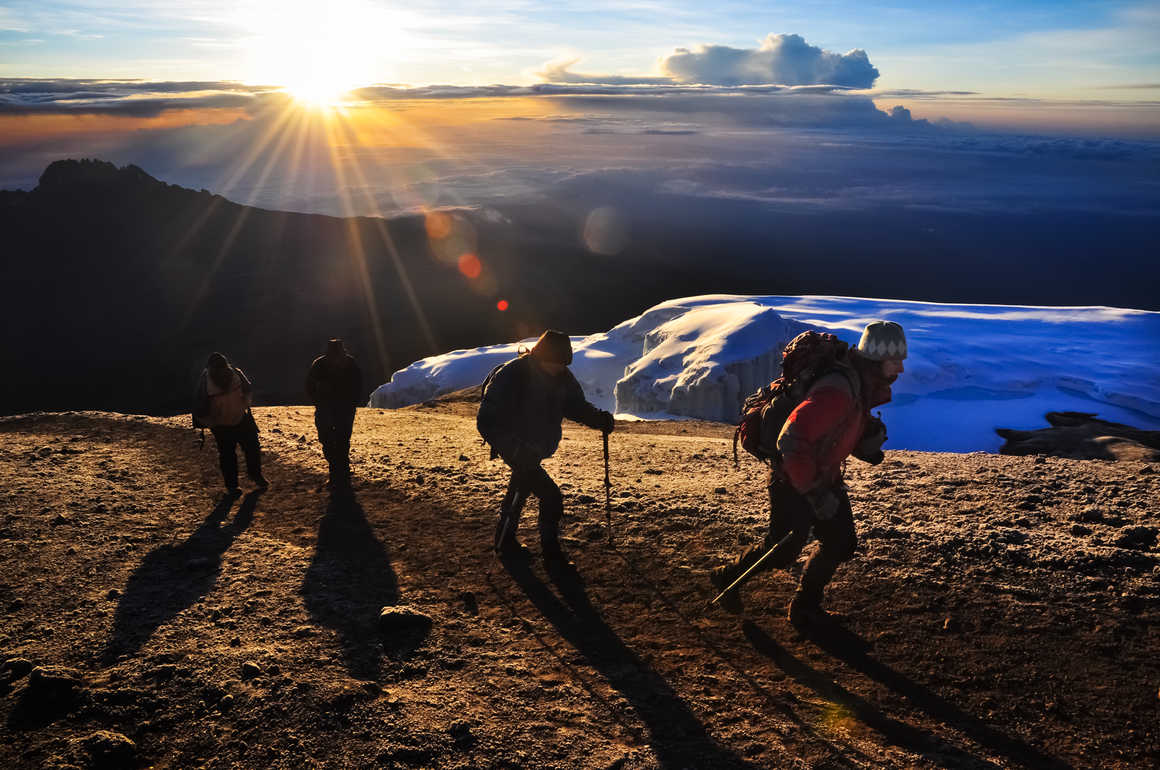
Tips for a successful Kilimanjaro summit night
Here are 5 tips that will make your Kilimanjaro summit night
that little bit easier:
- Eat well the night before
On summit night you will burn well over 6000 calories, and you
need to fuel the climb. Even if you have lost your appetite because of the
effects of altitude, you must keep eating. With Kandoo, our menus are designed
to be varied and tasty but even if you don’t feel hungry you have to eat. It’s
also a good idea to fuel your summit night with snacks that you enjoy, though
you should carry snacks that are not going to be affected by the cold like snack
bars, nuts, trail mix and dried fruit.
- Try not to worry if you can’t sleep beforehand
The higher the altitude, the harder it is to sleep at night
due to the reduced oxygen making it more difficult to breath. As well as this,
the evening before climbing to Kilimanjaro summit can be filled with excitement
and anxiety, making it challenging to get to sleep. Instead of everyone lying
awake in bed fretting, most tour operators including Kandoo Adventures start
the summit climb early so you needn’t worry too much if you can’t sleep
beforehand.
- Take the weather seriously and dress
appropriately
As temperatures are subzero at the summit of Mount
Kilimanjaro, layering clothing is key. Dressing appropriately for summit night
on Kilimanjaro is crucial for both comfort and safety. It is also essential to
ensure that all your equipment, including warm clothes and a headlamp, are
readily available (and charged!) By preparing with the right clothing, you’ll
be better equipped to enjoy the climb and focus on the views awaiting you at
the summit.
- Pack suncream, sunglasses and a sun hat in your
daypack
When preparing for summit night on Kilimanjaro, it’s
essential to also consider sun protection as the sun can be harsh at high
altitudes even first thing in the morning. Yes, you’ll be starting the ascent
to the summit at night but when the sun comes up, you will need protection. We
recommend packing high SPF suncream, lip balm, sunglasses and a sun hat in your
day pack so you can easily access them as and when you need.
- Take it slow, but not too slow
Finally, take it slow! Your guides will set a pace that they
think is best for you and you should try and maintain this pace. Going too fast
puts you at higher risk of altitude sickness and going too slow will mean your
walking day becomes impossibly long. Just keep plodding on and you will get
there.
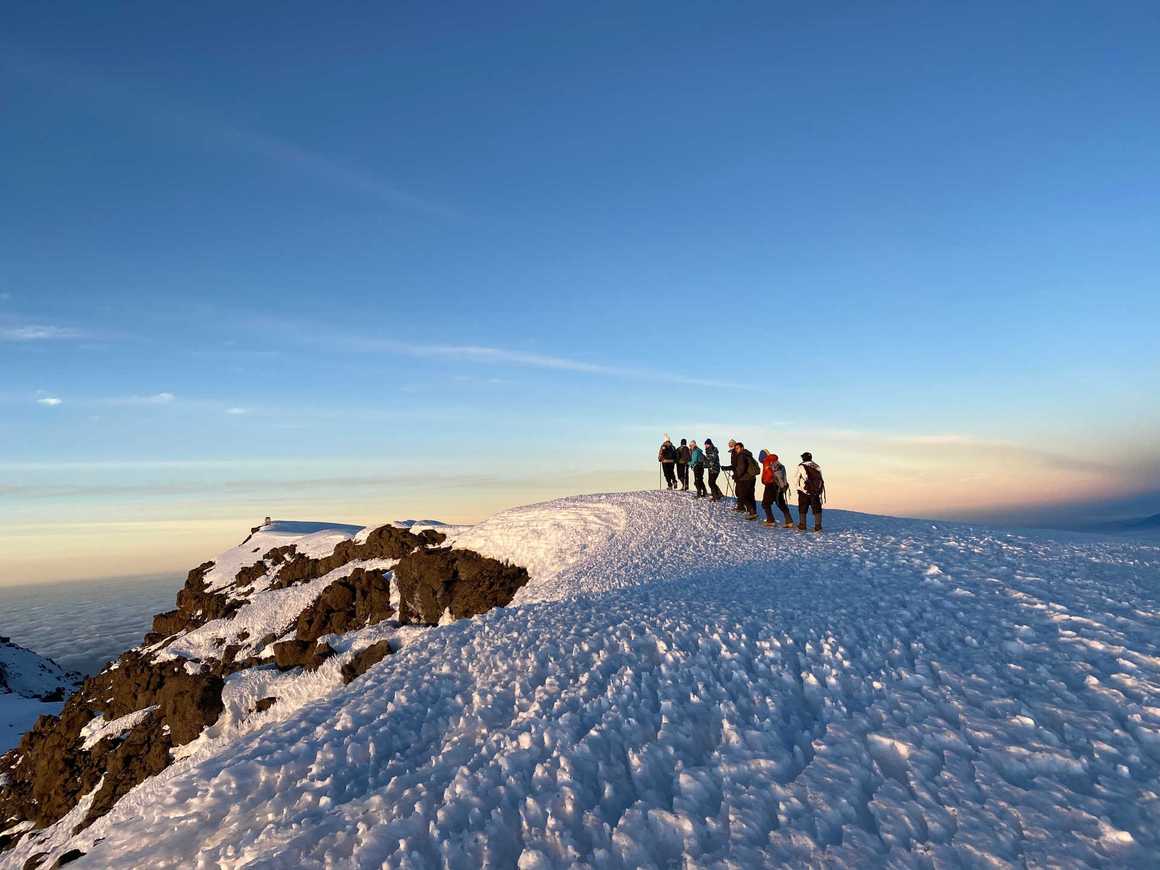
Kilimanjaro summit success rate
According to the Kilimanjaro
National Park Authority, the Kilimanjaro summit success rate is only 66% on
average. These statistics come from the nearly 30,000 climbers that attempt to
summit Kilimanjaro every year. But don’t let this dishearten you, climbing
Kilimanjaro is very much achievable. Don’t believe us? Just look at Kandoo’s
Kilimanjaro success rate.
At Kandoo Adventures, our Kilimanjaro summit success rates
are some of the best in the business at an average of over 98%. This is because
we only use the best guides who carefully plan trekking itineraries to factor
in plenty of time for acclimatisation. Spending more time on the mountain
significantly increases your chance of summiting as your body has more time to
adjust and acclimatise to the altitude. With over 15 years of experience, top
quality equipment and the best guides on the mountain, we have helped more than
12,000 people reach the summit of Kilimanjaro.










